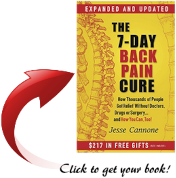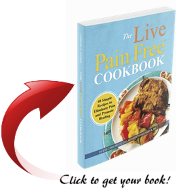When discussing targeted drug delivery for pain relief, it involves an accurate delivery of medications directly to the site of pain, in the hopes of minimizing side effects and at the same time maximizing its therapeutic effectiveness. And before we continue, I want to let you know that I am not a medical professional and what follows is not medical advice. I enjoy researching such topics on pain relief and pain management, and I hope you can use this information to further your own research.

Targeted drug delivery for pain relief has a number of advantages over the traditional delivery methods, such as enhanced drug concentration at the target site, reduced dosage requirements, and improved patient compliance. And thus, it increases the likelihood of patients sticking to their prescribed treatment schedule. Moreover, patients are will more likely follow the required course of treatment while taking their medications as directed, due to the advantages provided by the targeted delivery method.
Here’s an overview of targeted drug delivery methods for pain relief:
- Nanoparticle-Based Drug Delivery: This delivery approach involves the use of very tiny particles, called nanoparticles, which can be engineered as a drug and delivered to inflamed or injured tissues. These nanoparticles can be designed as a time-released drug, extending its therapeutic effects, and the delivering analgesic medications directly to the source of pain.
- Implantable Drug Delivery Devices: Implantable drug delivery systems are useful for managing pain on demand. Implants or pumps can be surgically placed near the target site to continuously release pain-relieving medications over an extended period. These devices can be programmed to deliver precise doses of medication according to the patient’s needs, reducing fluctuations in drug amounts and enhancing pain relief.
- Microneedle Arrays: Microneedles are tiny, painless needles that can penetrate the skin’s surface to deliver drugs to the underlying area of pain. Microneedle arrays can be loaded with analgesic medications, applied to the skin, and allowing for targeted delivery to specific areas of pain. This approach is a non-invasive and safe alternative to traditional injections or oral medications.
- Hydrogel-Based Drug Delivery: Hydrogels are water-swollen polymer networks that can absorb and release drugs in a controlled manner. Hydrogel-based drug delivery systems can be injected or implanted at the site of pain, forming a central depot for continuous drug release. These systems can be designed to provide a wide array of analgesic medications, including opioids, nonsteroidal anti-inflammatory drugs (NSAIDs), and local anesthetics, while minimizing side effects.

Targeted drug delivery is a promising approach for improving pain management by delivering medications directly to the source of pain, reducing side effects, and enhancing its therapeutic efficiency. Ongoing research in this field looks at optimizing its drug delivery strategies, improve drug-loading efficiency, and enhance the targeting of tissues for a wider array of pain conditions.
To Your Success & Freedom,
Glenn Shimabukuro



